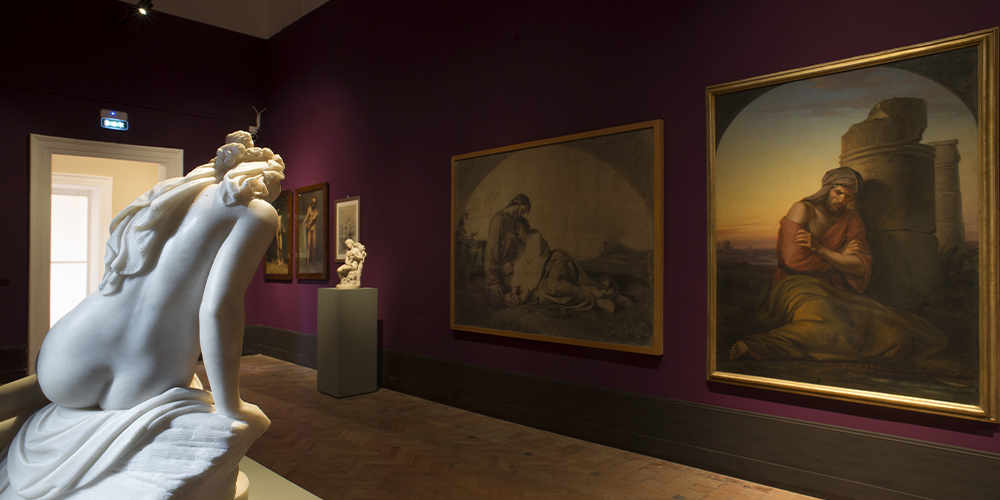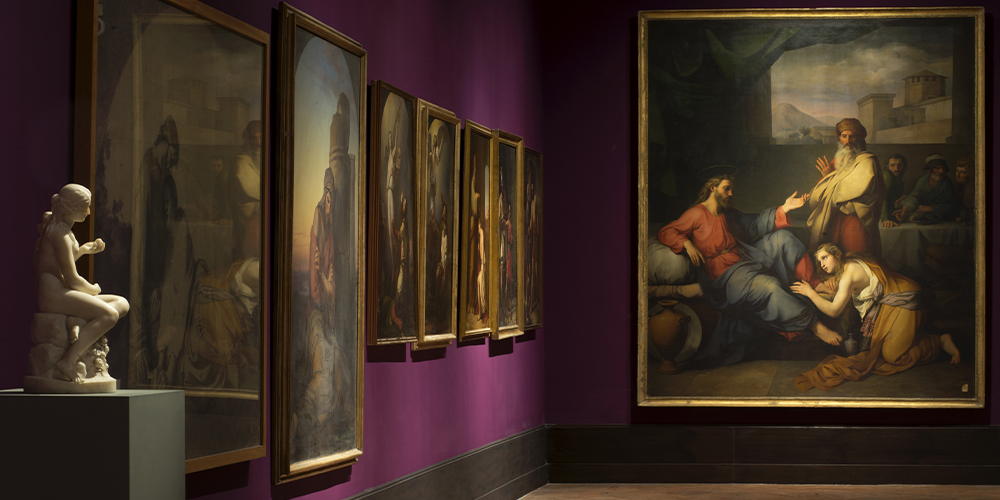A completely new look for a museum with such a rich history as the Naples Academy of Fine Arts.
An art gallery that has once again become a cultural treasure and an incubator of ideas for students, scholars, citizens, and tourists, who will once again be able to get to know the immense artistic heritage of an institution such as the Naples Academy of Fine Arts.
An institution that since 1752 has trained and hosted several generations of Italian and foreign artists and today represents a gateway to the complex world of art.
The new Academy Gallery in Naples, a heritage-protected since the end of the 19th century

The story of the Academy of Fine Arts in Naples started in the middle of the 18th century, and the permanent establishment of a picture gallery in the current building dates back to 1891.
At that time, the academy's director was Filippo Palizzi, one of the leading exponents of 19th-century verista painting and also part of one of the most important and prolific families of painters in southern Italy.
It is no coincidence that a generous bequest of works is part of the so-called Palizzi fund, conceived and donated by him in 1896.
Otherwise, the many paintings by the Abruzzese master, the academy's permanent collection already included paintings and drawings by significant personalities from the art world: from Giandomenico Tiepolo to the French painter Jean-Baptiste Camille Corot, from Jusepe de Ribera to Luca Giordano.
In addition to the historical art gallery, the same building also houses a gallery of plaster casts, with particularly rare and valuable sculptures. These works complement those in the gallery and are particularly important for students and various educational activities.
This gallery consists of four large rooms divided into thematic categories: Gallery of Statues, Hall of the Sacred, Hall of Heroes, and Hall of Gods.
The heritage of an institution such as the Academy of Fine Arts is rich in ancient art masterpieces and also contemporary art with increasingly recent acquisitions, new exhibitions, educational activities, and modern art collections that cover the entire 20th century up to the present day.
A new identity for GAN, from exhibition design to visual communication

The main objective pursued by the two curators Federica de Rosa and Marco di Capua is to emphasize the historical identity of the collections and to investigate the relevance of the academic institution with all its changes over time.
That is how the new GAN develops, totally renewed thanks to Lucio Turchetta's staging and Enrica D'Aguanno's visual communication. They stage a precise narrative that digs deep into the times, themes, style, and personalities of each individual author, paying great attention to the cultural and social dynamics between pupils and masters.
In this way, forgotten artists and new protagonists of the contemporary scene are rediscovered, in an intense and profound dialogue between what is more ancient and what is closer to our time.
Finally, with great attention to the new museum requirements in terms of space allocation, the "Spazio Lea Vergine" is also created, an area that will be exclusively dedicated to temporary exhibitions, debates, and presentations.
This choice consolidates the action of the cultural center, museum and research laboratory that the Academy of Fine Arts of Naples intends to exercise on the Italian art scene.
The new gallery is already ready to welcome scholars and tourists from all over the world, an opening that will let you enter the academic world of art made up of tradition, research, and experimentation.










Lascia un commento